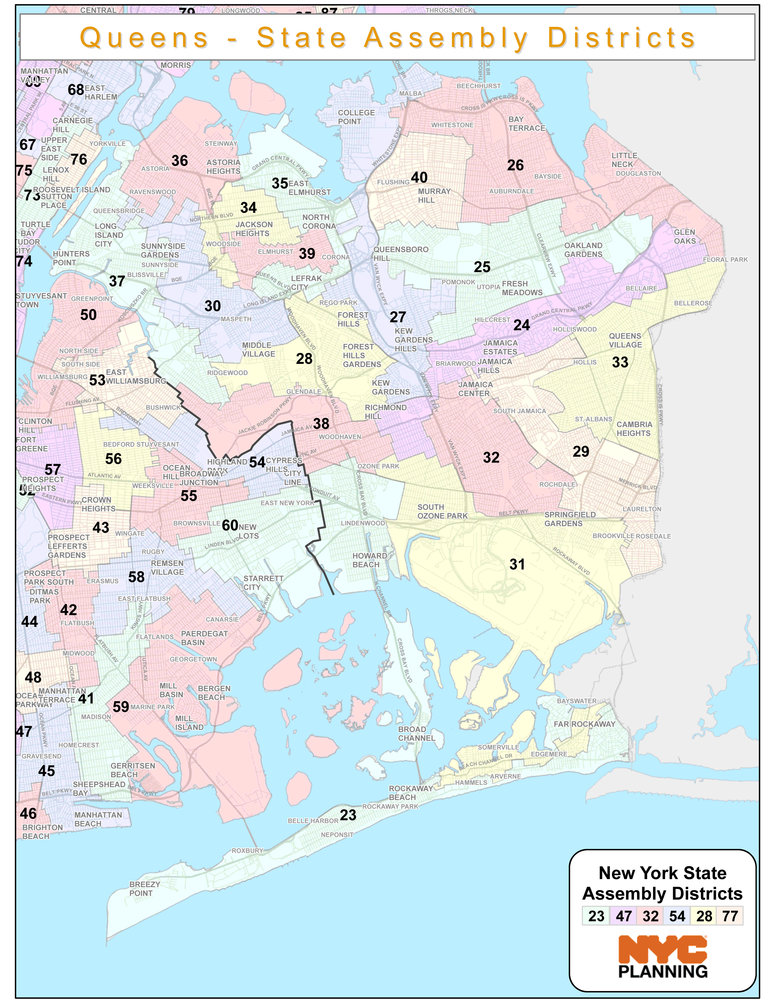Pol Position: District Shuffle
Political district lines are redrawn every 10 years as a result of new figures provided by the U.S. Census.
However, this year, while the newly drawn district maps were expected to pass the approval of a bipartisan commission, the Democratic-led state legislature took control of the process after the efforts to redraw district lines broke down.
The end result was a series of new district maps that were released in February, reshaping the boundaries of several electoral districts. However, members of the Republican Party were displeased with the new maps and responded by filing a lawsuit, disputing that the process was gerrymandered by the Dems.
The State Supreme Court ruled in favor of the GOP’s lawsuit, in March, determining that they were able to prove “beyond a reasonable doubt the map was enacted with political bias.” As a result of this decision, Justice Patrick McAllister ordered that the legislature draw up new maps by April 11.
Democratic lawmakers immediately appealed the case, and on April 21, a panel of judges with the Appellate Division ruled in favor of the court regarding U.S. Congressional districts, while reversing its decision regarding the State Senate and Assembly.
The court decision requires district lines to be redrawn by April 30, in order to resolve the conflict before the primary in June.
Meanwhile, the Dems have continued to appeal the case to a higher court, which plans to hear the case on April 26, after press time. Its decision will ultimately set a precedent over the decision of the two lower courts.
What is Gerrymandering?
Simply put, it is an unconstitutional practice in which district lines are redrawn with the purpose of influencing the outcome of who will get elected.
The word tends to get thrown around a lot by politicians and the media, but it’s important to understand the impact such decisions have during any given election year.
What does this mean for my district?
Based on the proposed redistricting maps, Brooklyn voters in the Sunset Park and Park Slope communities could potentially be included in the newly reshaped 11th Congressional District.
Presently the district includes all of Staten Island as well as southern Brooklyn communities including Bay Ridge, Bath Beach, Dyker Heights, Sheepshead Bay, and parts of Bensonhurst.
In a previous Pol Position editorial, back in February, we took a look at the possible reshaping of this district, which voted predominantly Republican in the 2020 general election.
The district has been strongly Republican since 2013 when redistricting allowed former Congressman and convicted felon Michael Grimm to lay claim to the seat. After being sentenced to eight months in prison, the seat was left vacant until Dan Donovan was elected in a 2015 special election.
Dems briefly regained control of the district in 2018, when former Congressman Max Rose defeated incumbent Donovan, but this victory was short-lived. Rose was later defeated by Republican Rep. Nicole Malliotakis in the 2020 general election, who staked claim to the district seat by a small six percent margin.
Should the courts approve the redistricting maps, the 11th District would be reshaped to incorporate more left-wing allied communities including Sunset Park and Park Slope. This could certainly provide Rose with a leg-up against his successor, pending a possible Democratic primary, as he campaigns to try and reclaim his seat in Congress.
While experts say it is rather unlikely, should the decision be made in favor of the lower courts, it would require the legislature to return to the drawing board. This could also potentially cause primary dates to be pushed back.
**UPDATE**
The courts have ruled that the redistricting maps were unconstitutionally drawn to favor the Dems. As a result, the state has until April 30th to submit new maps.







